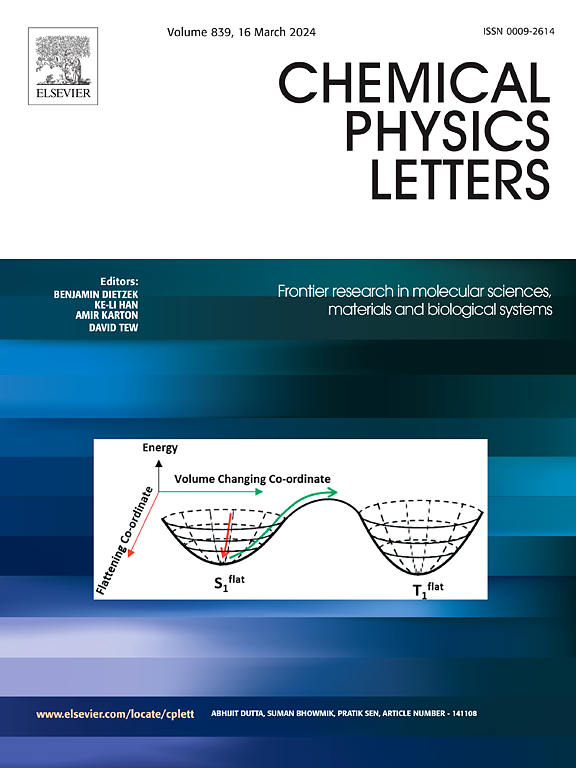Novel superhard semiconductor carbon allotrope Pcc2 C24 under pressure: First-principles calculation
IF 2.8
3区 化学
Q3 CHEMISTRY, PHYSICAL
引用次数: 0
Abstract
Carbon allotropes have been used in microelectronic devices and optoelectronic devices due to their excellent mechanical properties and tunable electronic properties. Adopting density functional theory (DFT), we propose a new carbon allotrope Pcc2 C24. Pcc2 C24 can maintains dynamic and mechanical stability under ambient and high pressure, and its thermal stability at room temperature has also been confirmed. The increase of pressure has little effect on the relative enthalpy, which further illustrates the excellent stability of the new carbon. Mechanical properties and electronic bands at 0–100 GPa are also analyzed in detail. Elastic constants, elastic modulus and mechanical anisotropy all increase under pressure induction, and Pcc2 C24 can maintains superhard properties. In addition to its excellent stability and superhard properties, the new material is also a wide band gap semiconductor. Pcc2 C24 has an indirect band gap of 3.39 eV, which is obtained by HSE06 functional, and the band gap decreases with the increase of pressure. This newly proposed carbon allotrope as a superhard semiconductor may have development potential in the field of microelectronic devices and semiconductor devices operating under high pressure.

求助全文
约1分钟内获得全文
求助全文
来源期刊

Chemical Physics Letters
化学-物理:原子、分子和化学物理
CiteScore
5.70
自引率
3.60%
发文量
798
审稿时长
33 days
期刊介绍:
Chemical Physics Letters has an open access mirror journal, Chemical Physics Letters: X, sharing the same aims and scope, editorial team, submission system and rigorous peer review.
Chemical Physics Letters publishes brief reports on molecules, interfaces, condensed phases, nanomaterials and nanostructures, polymers, biomolecular systems, and energy conversion and storage.
Criteria for publication are quality, urgency and impact. Further, experimental results reported in the journal have direct relevance for theory, and theoretical developments or non-routine computations relate directly to experiment. Manuscripts must satisfy these criteria and should not be minor extensions of previous work.
 求助内容:
求助内容: 应助结果提醒方式:
应助结果提醒方式:


